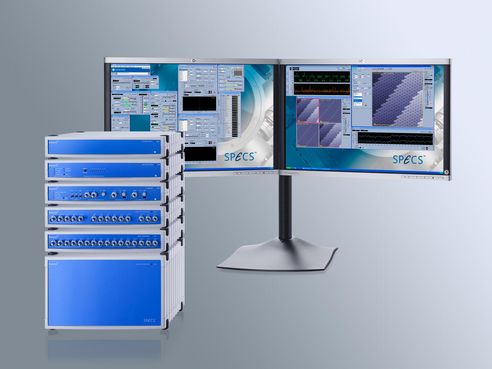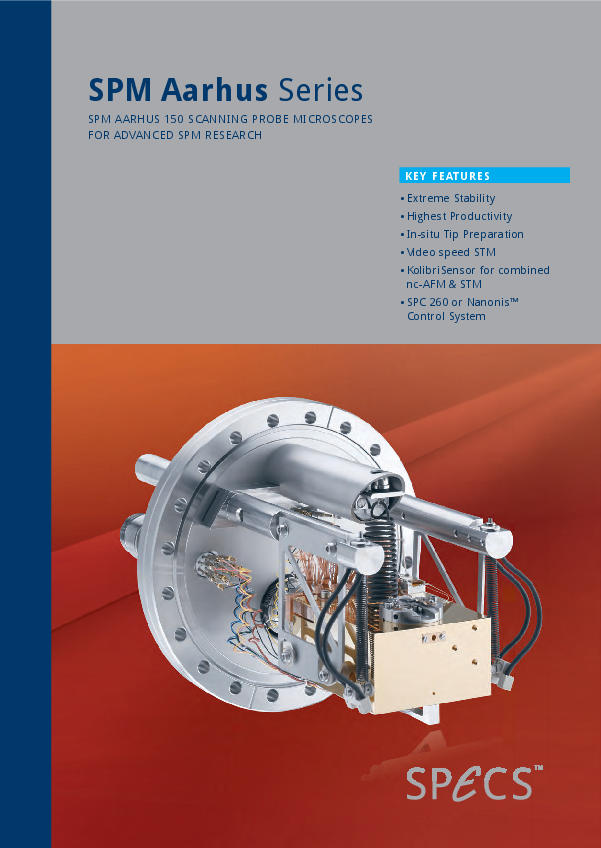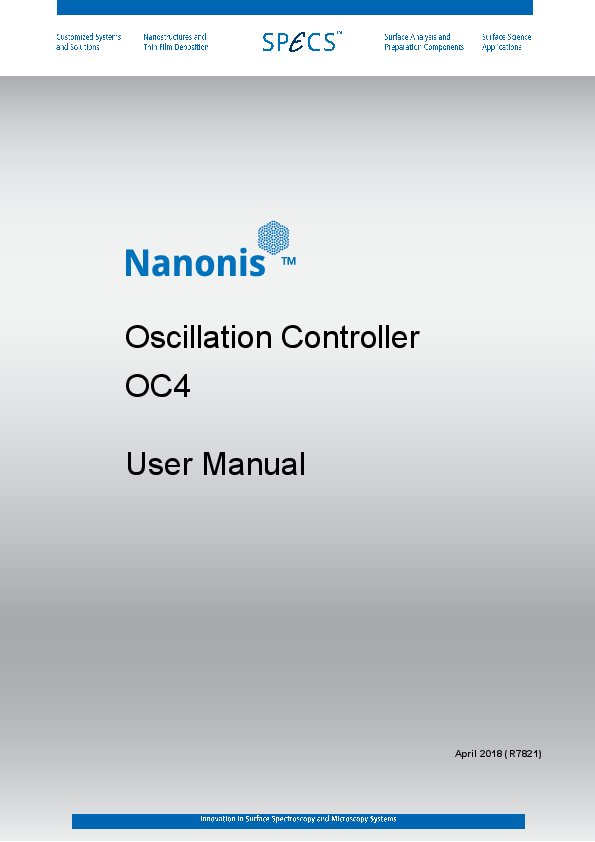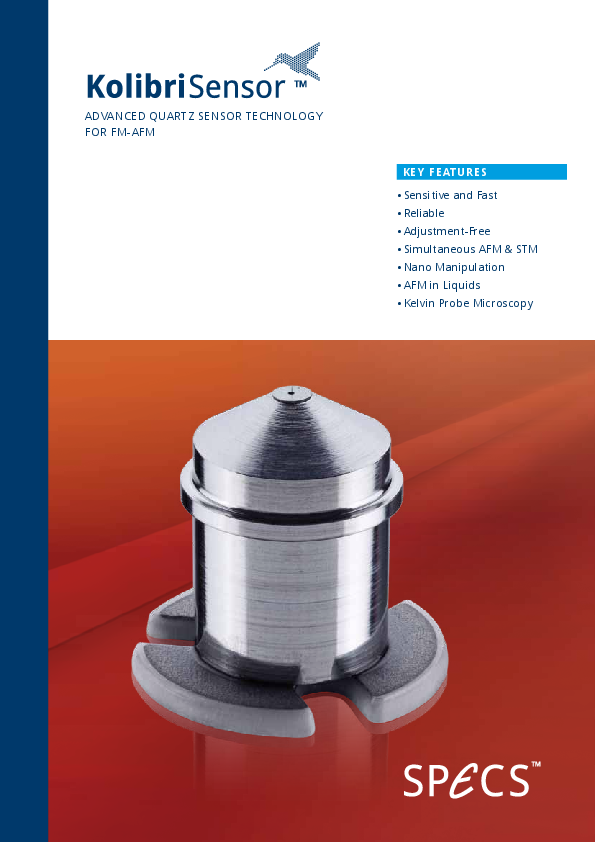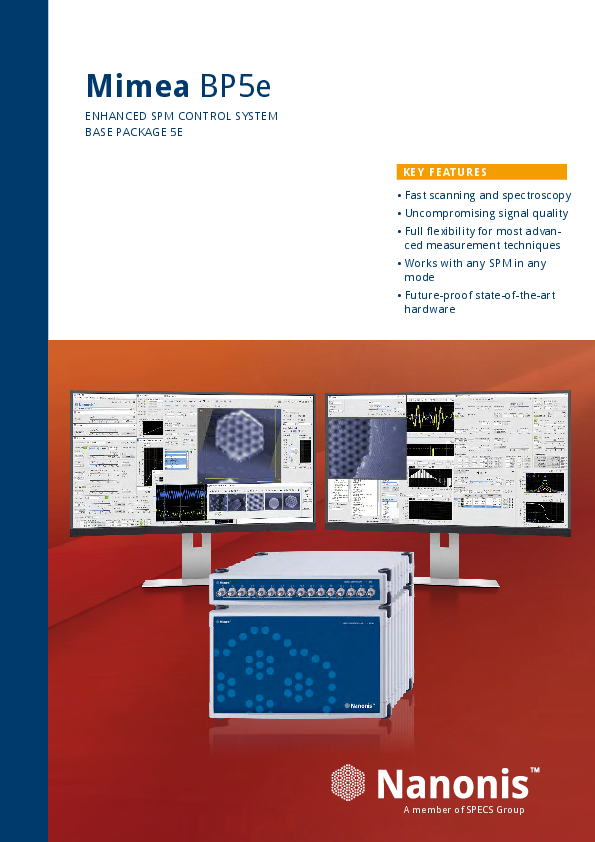 Detail
DetailMimea package for SPM 150 Aarhus
The Nanonis Mimea SPM control system combines exceptional signal quality, high speed and a flexible, powerful and user-friendly software interface.
The configuration for the SPM 150 Aarhus is designed to maximize the performance of the extremely stable and fast SPM 150 Aarhus platform, and adds ncAFM capability with the Kolibri Sensor to that instrument.
As a fully digital system, all analog signals in the Nanonis Mimea SPM Control System are converted immediately into the digital domain, where all signal processing is performed. This makes them essentially immune to external noise and crosstalk and ensures the best possible signal quality, which is crucial for SPM applications. In combination with the powerful software package, signal routing, signal monitoring and any operation between signals can be adapted and optimized on the fly with the press of a button instead of adjusting external hardware cabling.
The system handles a very large number of live signals in real- time. Up to 24 signals can be acquired simultaneously with up to 8 additional signals streamed to disk at up to full ADC speed. This very large number of live signals can not only be monitored, but also all signals are displayed as real world numbers in floating- point representation, with assigned SI units for immediate quantitative results, without the need of additional calibrations during data analysis.
For fast scanning and spectroscopy, one of the unique capabilities of the SPM 150 Aarhus, up to 1,000,000 pixels per second can be generated and acquired on up to 8 channels. This makes it possible to acquire extremely highly resolved topography or spectroscopy maps in a significantly shorter time. With a 64-bit software where memory is no longer a limitation, the only barrier is given by disk space.
The BP5e base package provides all the functions for STM measurements while the Oscillation Controller (OC4) and the related software modules add dynamic and multifrequency AFM capabilities for the operation of the Kolibri sensor. With an input bandwidth of 5MHz, the OC4 can easily control the Kolibri sensor and it is also perfect as a digital lock-in and signal analyzer (FFT) up to 5 MHz and can be further extended for Kelvin probe applications or customized in LabVIEW with the Nanonis Programming Interface.
The configuration includes a HVA4 high voltage amplifier and the AKAH adaptation kit designe to drive the inchworm motor of the SPM 150 Aarhus
More details about the BP5e can be found below, on the Mimea main page. More details about the OC4 can be found on the Oscillation controller page. More details about the HVA4 and AKAH can be found on the corresponding product pages.
